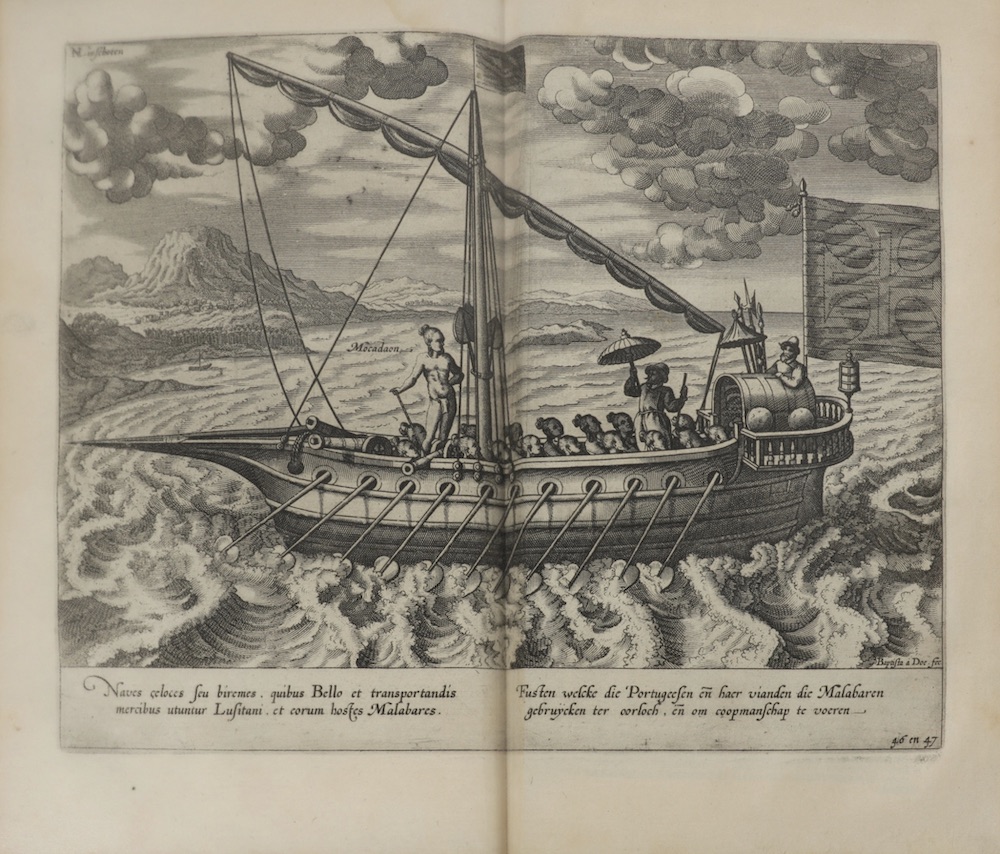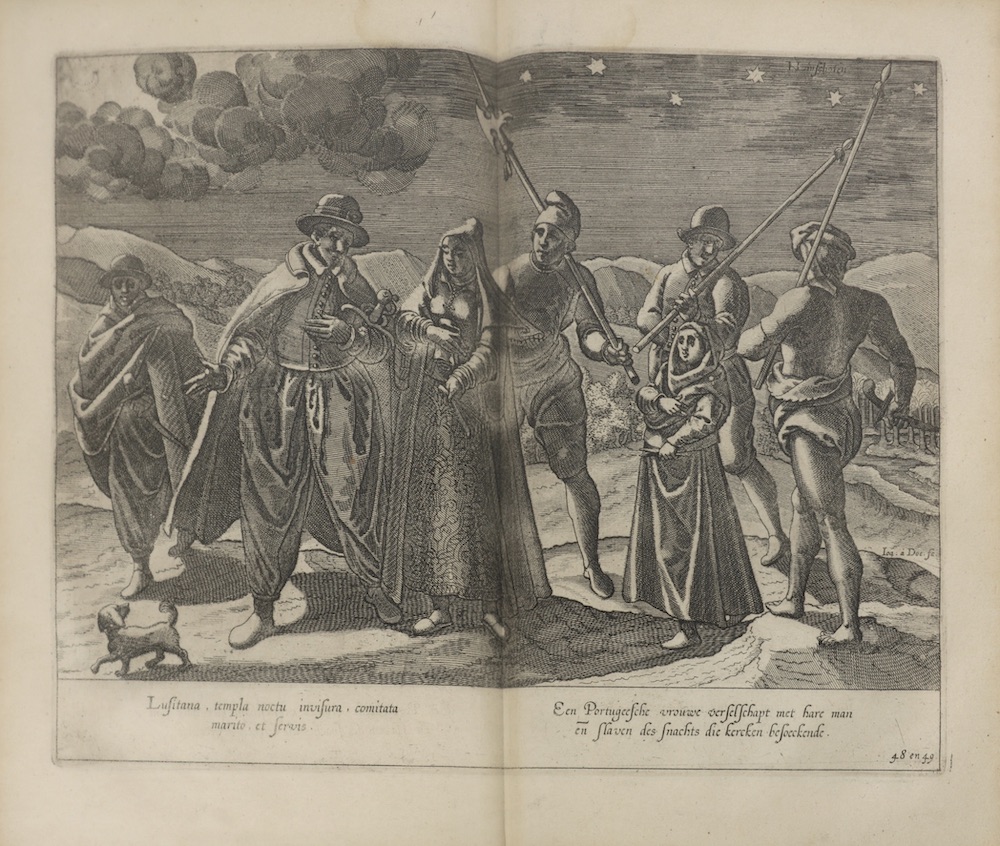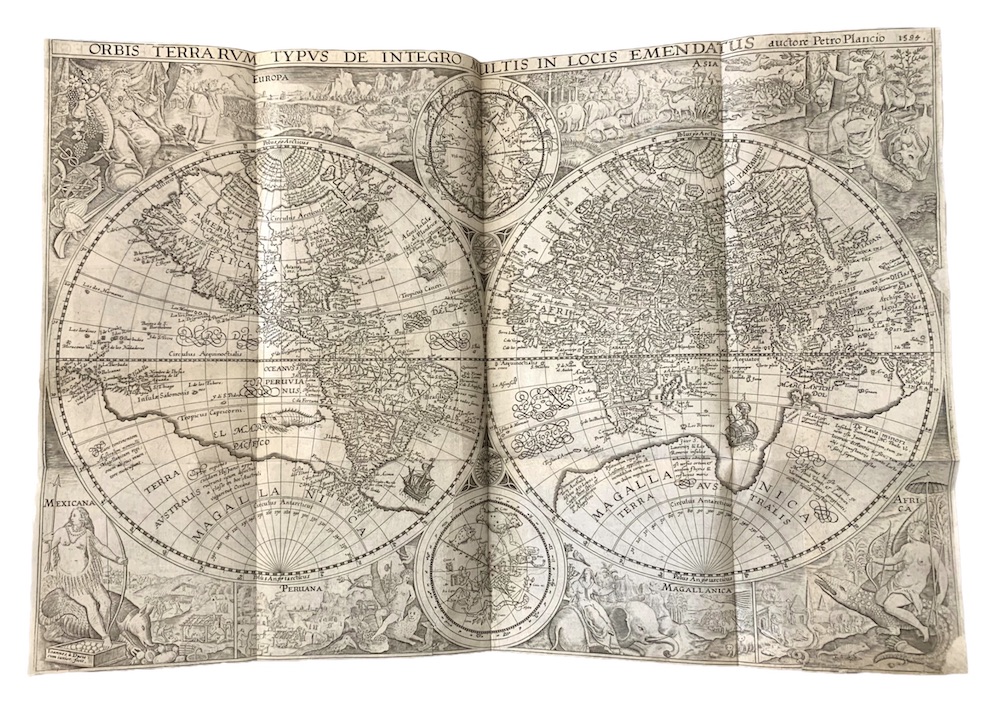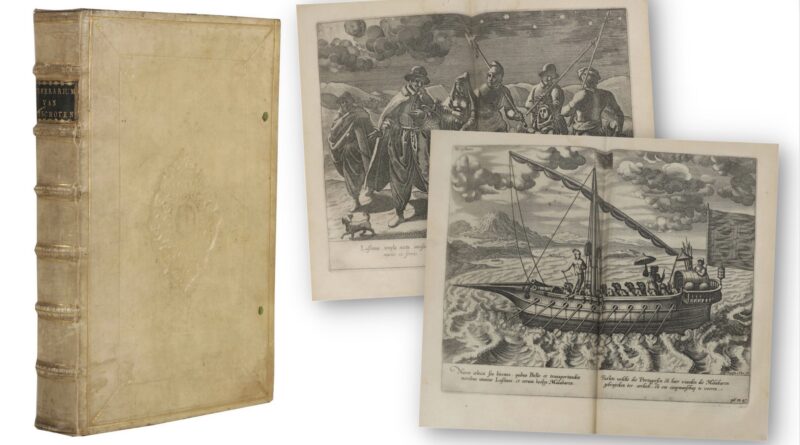Rare 17th-century books of Dutch exploration in sale
Two volumes bound in one of two key works in the history of Dutch exploration in the 17th century are due to sell at Chiswick Auctions this month.
A second edition of Jan Huygen van Linschoten’s Voyasie (1624) and his hugely influential Itinerarium (1644) is estimated at £15,000 – £18,000 as part of the sale of Books & Works on Paper on October 26.

Voyasie is a rare description of two pioneering Arctic voyages made in the last decade of the 16th century in search of the fabled North-East Passage to China. Linschoten (1563-1611) himself had accompanied his countryman, the navigator and explorer, Willem Barentsz on two voyages to the Arctic Ocean in 1594 and 1595.
During the first voyage and an unseasonably warm summer, the fleet had managed to enter the Kara Sea. The second voyage, launched on a much grander scale with seven ships loaded with merchandise destined for China, found the sea impassable due to ice and was forced to turn south.

The routes and sights are detailed across 15 folding plates and maps that were decoratively engraved by Johannes van Doetecum and his son Baptista. A remarkably accurate map of Norway and parts of Denmark, Sweden, and Finland is the last engraving in the work.
A first edition of Voyasie had appeared in 1601, although it is so rare no copy has appeared at auction since the 1970s.

The other work bound with the Voyasie is Linschoten’s Itinerarium, in three parts, and an equally important Dutch language work on the sea routes of West Africa, Brazil, India, and the East and West Indies, showing the routes, before unknown, to the Spice Islands, together with Linschoten’s account of his travels in the Orient.
Itinerarium, with 31 double-page engraved plates, is the work credited with enabling the Dutch entry into the lucrative East Indies and Brazilian trade, once the exclusive preserves of the Portuguese.


